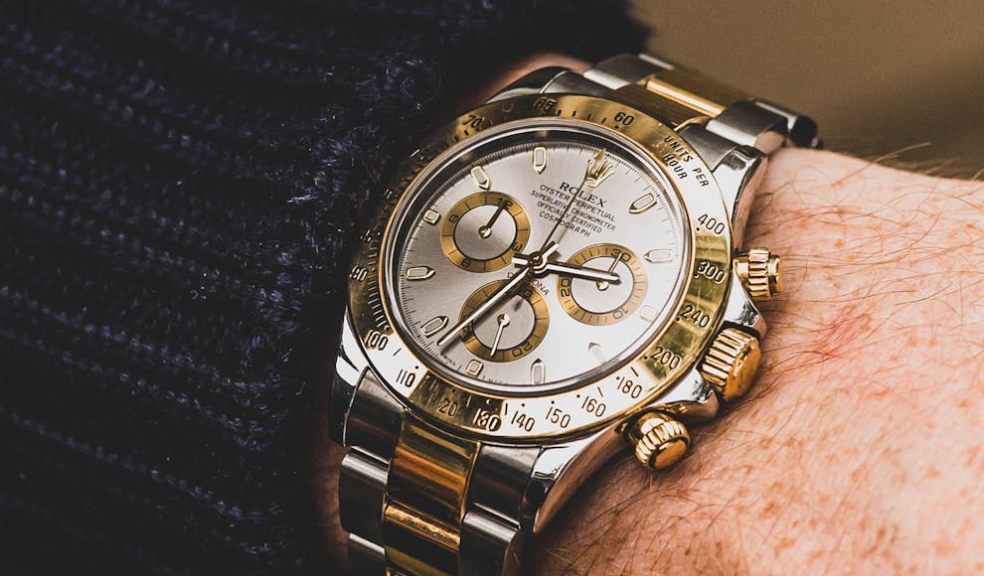
Behind Every Luxury Watch is an Intricate Tale of Artisanship
The purchase of a luxury watch means more than just acquiring a statement piece — it's also an investment in fine craftsmanship. Behind every exquisite timepiece, skilled artisans are working to create a unique masterpiece that can be worn with pride.
Blending science and art
Rebecca Struthers is one of the UK’s few remaining artisanal watchmakers (a craft that has been listed as ‘endangered’ by the Heritage Craft Association) and she knows a lot about watches. Rebecca says: “Watchmaking is both design and science; engineering and art … It’s quite sentimental, which is an interesting overlap as watches are precise, scientific instruments that are also crafted by human hands.”
She continues: “500 years ago, watches used to be incredibly expensive luxuries that would take years to make and only a few could afford … It wasn’t just about the value of the object; it was about it being the latest in science and technology, and us being able to display our knowledge about the world through the technology we owned.”
“Nowadays,” she concludes, “luxury watches don’t have to be practical – if we want to spend years crafting something out of the finest materials, we can. Designers and makers are pushing the boundaries of technology and exploring what it means to be a watchmaker, and that creates a really exciting opportunity for collectors.”
Design, quality and technology
A high-end wristwatch requires several steps to complete, from designing the movement and dial to making the case and crown. Quality remains the hallmark of a luxury watch and ensures its enduring value. With the world-renowned Rolex brand, for instance, you can be sure that your timepiece will stand the test of time thanks to the meticulous design process and inimitable craftsmanship. It will prove to be a good investmentthat can be passed on to future generations.
The most important element in the creation of an intricate luxury timepiece is design. Sketches will first be produced, often drawn to a 1:1 scale. The movement must be taken into consideration at every step, as this is the core of a watch. The design of both the movement and the case are worked on simultaneously, thus ensuring that the two will fit together. With a clear representation of the watch established, the next step is to acquire the components needed to build it.
It is far simpler to reproduce an existing part in watchmaking than to develop a new design, so specialised watchmaking suppliers are employed to provide components such as hands and dials. If the part needed is not readily available or is out of date, it will have to be manufactured by the watchmaker.
Technology has advanced to the point where it is now economically viable to make parts in very small quantities. As a result, many watchmakers are able to produce specific parts for individual watches, though this is generally for custom movement parts. In high-end watchmaking, cases and even bridges require the combination of traditional craftsmanship with state-of-the-art technology.
The advent of micro branding
Computer-aided design enables watchmakers to create or modify a design and source precise components more easily. This has seen the development of a new development within the industry – micro branding. With a novel design in mind, exclusive brands can have parts made with relative ease, without the significant investment in tools and stock that have traditionally been required to produce bespoke components.
Elite craftsmen adding value and beauty
However, even in this day and age, luxury manufacturers will still turn to master watchmakers to assemble their pieces or to craft a replacement part for an item that is out of production. This is where a good understanding of the foundations of design is essential, along with expertise in a wide range of craft skills.
In addition to adding aesthetically pleasing beauty, master craftsmen have maintained distinctive manufacturing customs. Their ability to create handcrafted watches enables luxury brands to continue guaranteeing excellence. Collectors who value brand heritage, company history, tradition, values, creativity, and long-lasting product quality will find great satisfaction in owning a one-of-a-kind luxury handcrafted timepiece, knowing that it has been made with great care and respect.
In conclusion, the creation of a luxury watch transcends mere functionality, embodying a rich narrative of artisanship and innovation. As described by watchmaker Rebecca Struthers, the process merges design, science, and emotional sentimentality, rendering each timepiece a unique artifact that showcases advanced technology through the prism of traditional craftsmanship. The enduring appeal of these watches not only stems from their intricate designs and the quality of materials used but also from the heritage and the meticulous skills of master watchmakers. For collectors and aficionados, these timepieces represent not just an accessory but a lasting investment in beauty and excellence, promising to carry forward a legacy of exceptional craftsmanship to future generations.













